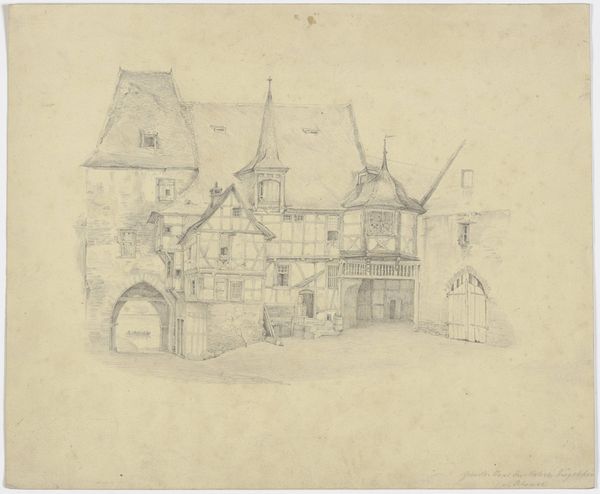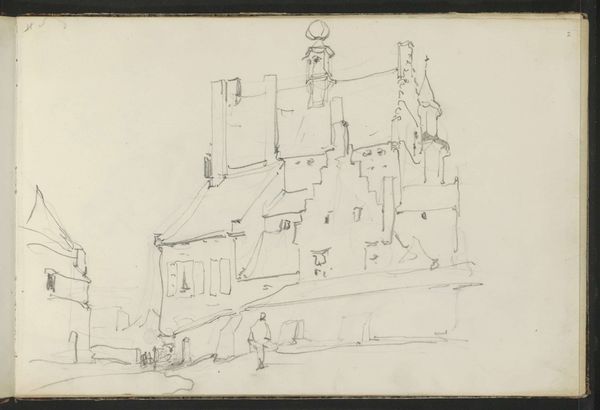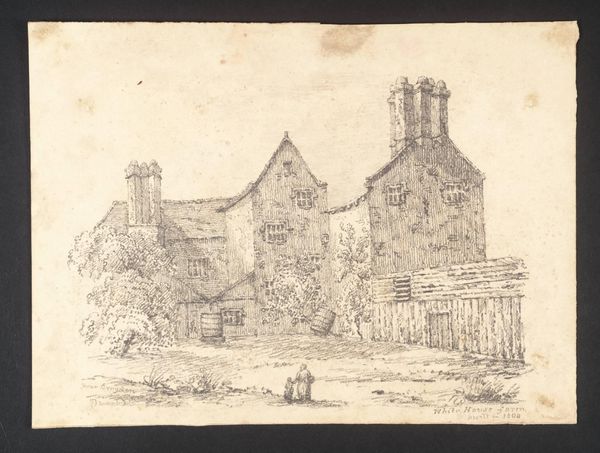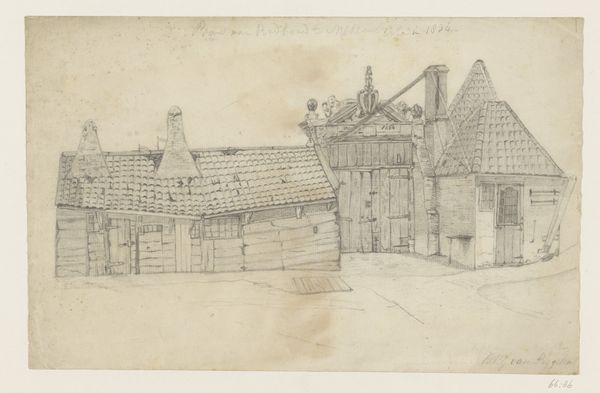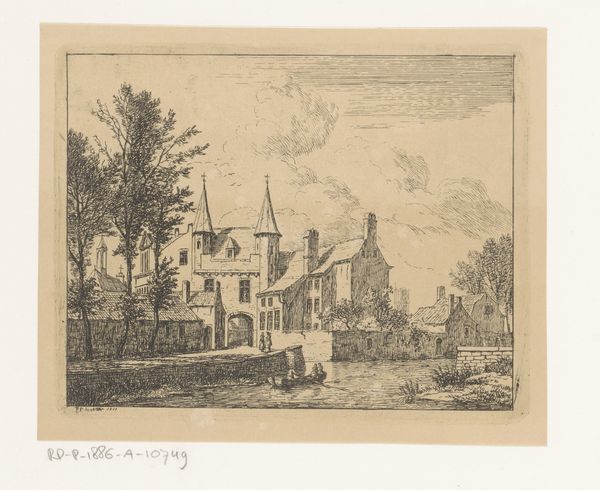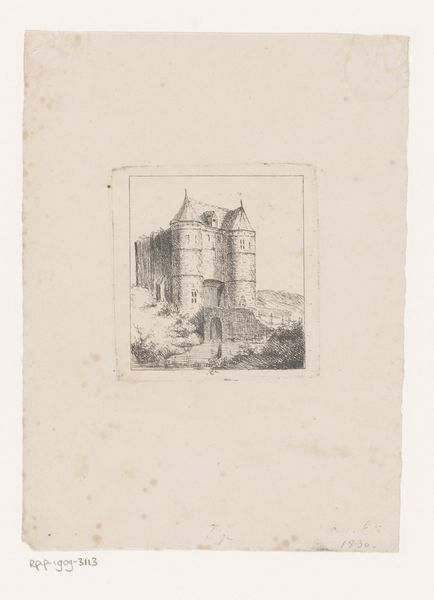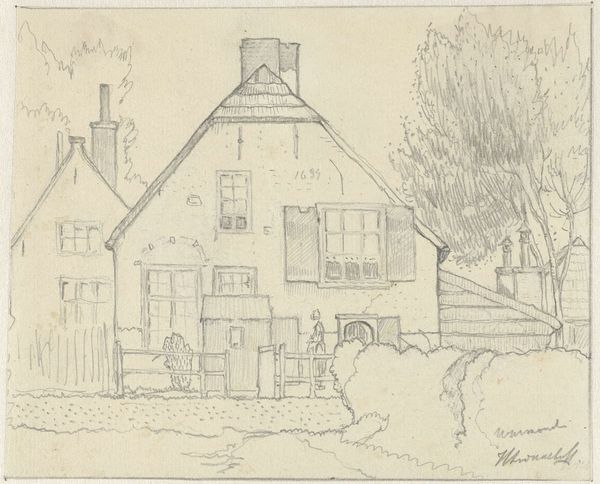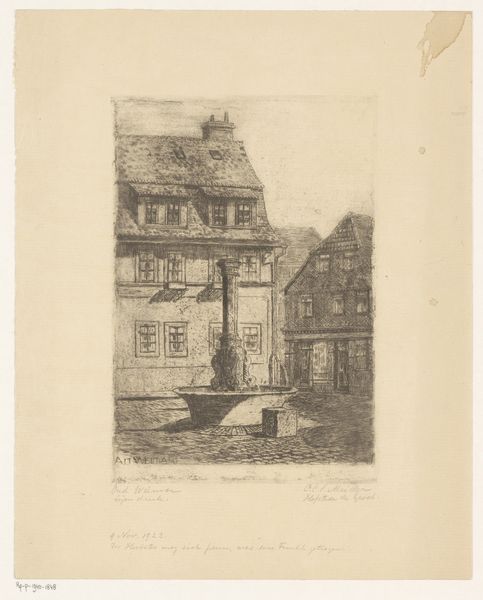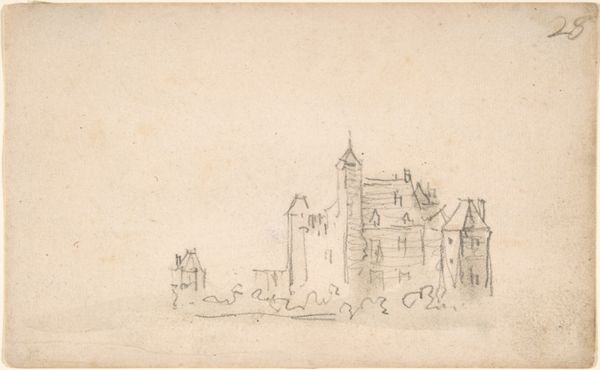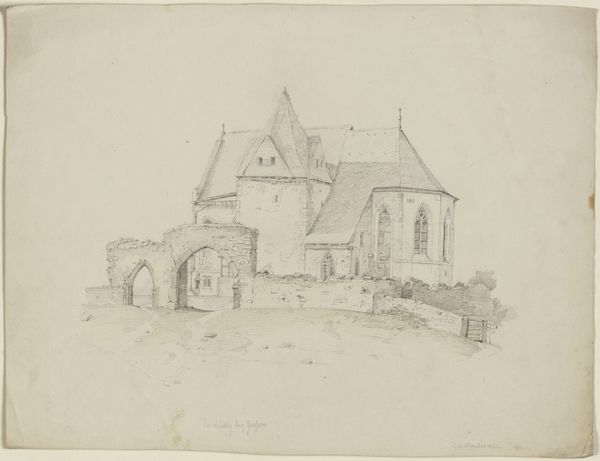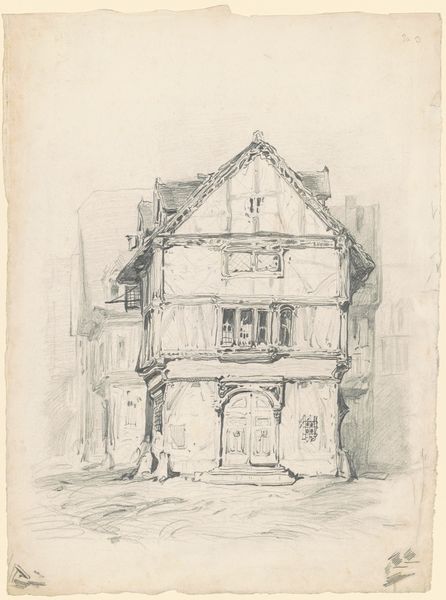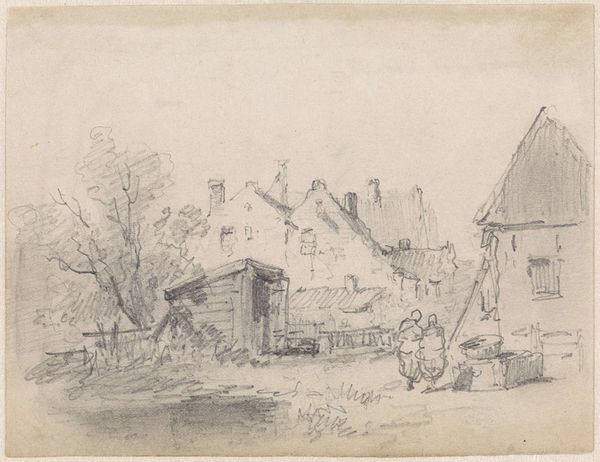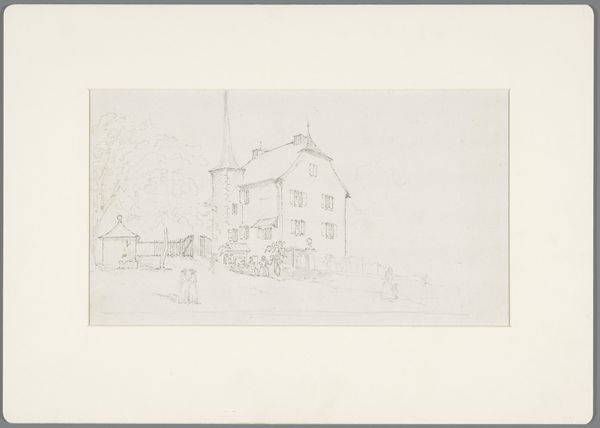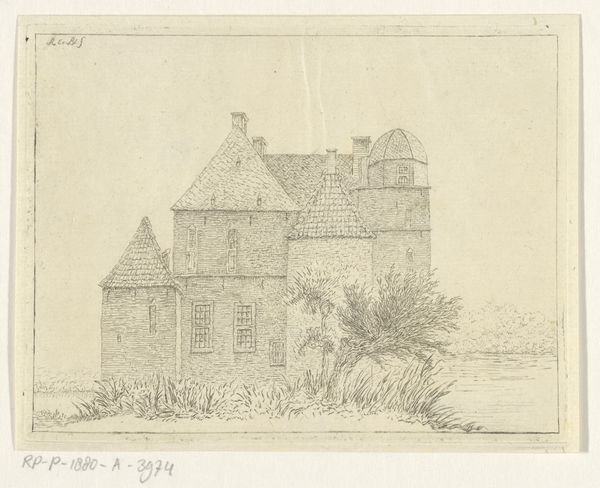
drawing, pencil, architecture
#
drawing
#
pencil sketch
#
old engraving style
#
landscape
#
etching
#
romanticism
#
pencil
#
architecture
Dimensions: height 274 mm, width 392 mm
Copyright: Rijks Museum: Open Domain
Curator: Immediately, this image exudes a profound sense of quietude, almost melancholic. The limited tonal range makes the architectural form appear isolated, as if detached from a vibrant history. Editor: That's fascinating. Let’s delve into that isolation. This drawing, titled "Kasteel op glooiend terrein," or "Castle on sloping land," is attributed to Albertus Brondgeest. While the exact date remains unclear—estimated between 1796 and 1849—its medium is definitively pencil on paper. The Rijksmuseum holds this rendering now. The quick medium, combined with that date range, suggests to me that this might be preparatory sketch, rather than a finished work. Curator: Ah, the notion of preparatory! I see how that affects the overall reading. It lacks the definitiveness, or the declarative, celebratory statement often found in formal architectural renderings. In fact, it feels haunted, perhaps abandoned. What iconographic elements do you find significant here? Is the sloping ground a symbol? Editor: Well, what strikes me is the simplicity of means – a pencil, paper, presumably readily available and relatively inexpensive – allowed Brondgeest to capture a place that might have been inaccessible to many, whether by distance or social class. That hill becomes interesting then—elevating a building, while not aggrandizing it. It shows, but it's not performative. Curator: Indeed. The architecture looms against a light and empty sky. But the real sense of symbolic weight resides, for me, in what we can’t see. What activities once occurred in that castle? The pencil lines seem to trace a fading cultural memory, a yearning for a bygone era perhaps. This subtle visual rhetoric positions the viewer as a kind of nostalgic observer. Editor: I like the notion of "fading" because the drawing’s delicate lines point us to vulnerability, and the fragile existence of not just buildings but entire societal structures that once gave them meaning. Look closely: there's a real sense of transience communicated, a suggestion of how easily human enterprise and effort can erode, return to earth. We're invited to consider decay. Curator: Thinking about decay underscores its potency as a Romantic-era emblem, as it signifies not merely an ending but also transformation and a poignant meditation on human limits. Editor: For me, knowing this was likely a quickly executed work allows a deeper look at the means, how a castle might endure, while other factors of time, cost, labor may fade—pencil yields different readings to different perspectives, doesn't it? Curator: It certainly does, which enriches its impact—allowing us, across centuries, to consider that enduring structure through this softly rendered lens.
Comments
No comments
Be the first to comment and join the conversation on the ultimate creative platform.
